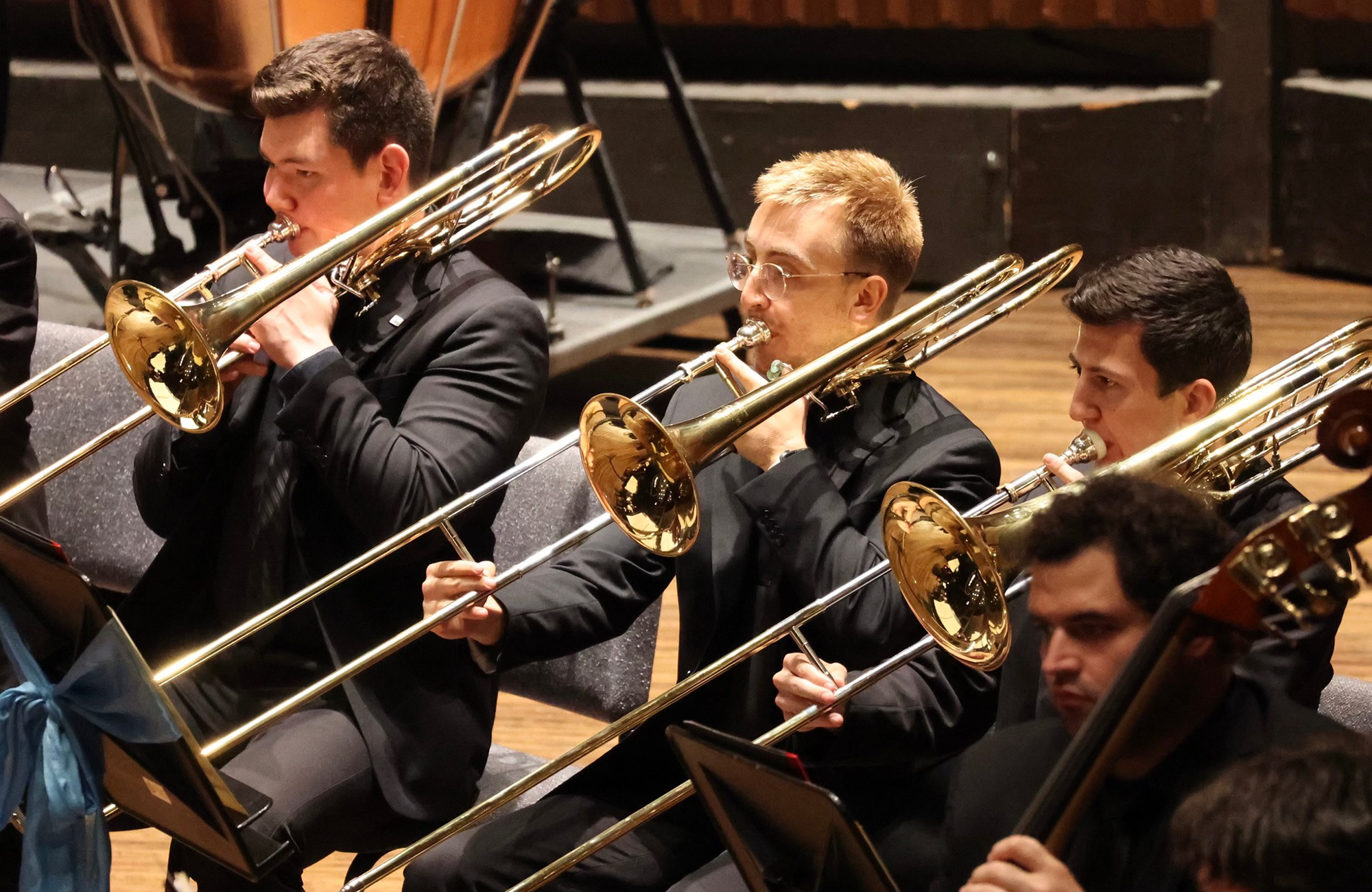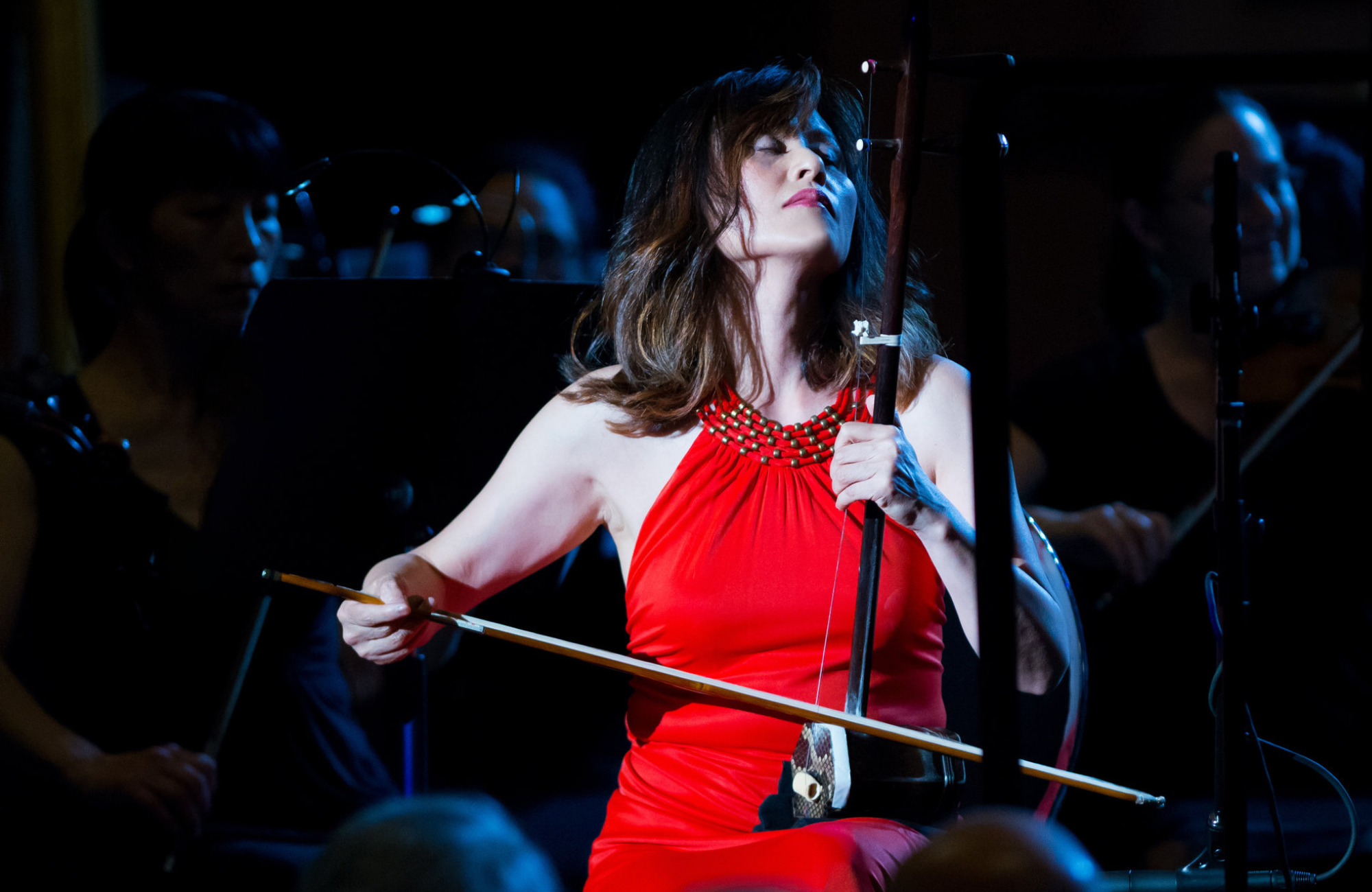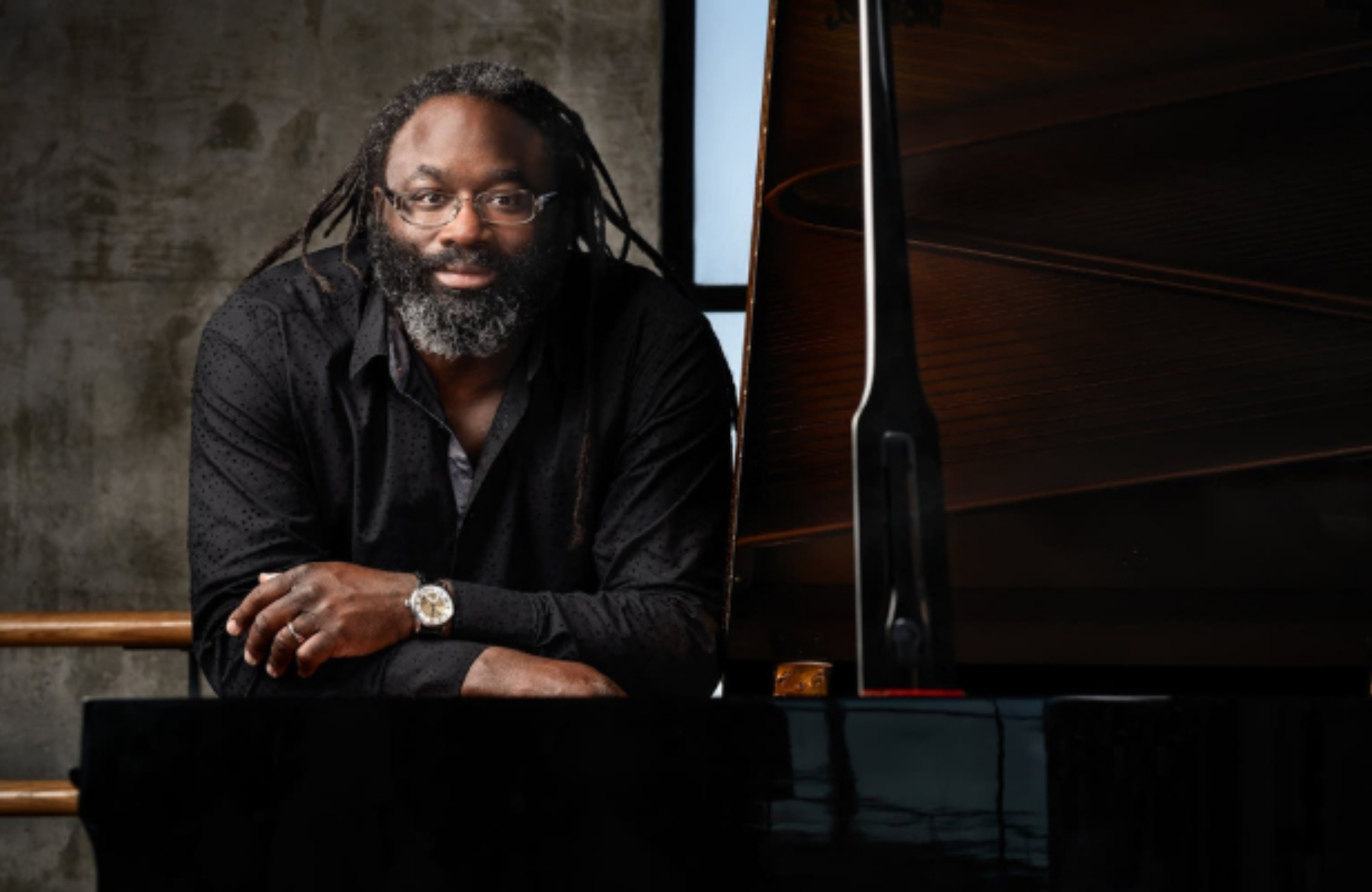Beethoven’s Symphony No. 5 begins famously with “fate knocking at the door.” Experience this beloved work, and further explore the topic of fate in music with Carlos Simon’s Fate Now Conquers. The Syracuse Orchestra will feature principal oboist, Eduardo Sepúlveda, performing R. Strauss’s gorgeous Oboe Concerto. The evening includes a world-premiere by one of our favorite composers, Polina Nazaykinskaya.
PROGRAM
NAZAYKINSKAYA: Fractures
STRAUSS: Oboe Concerto in D Major, TRV 292 (AV 144) ![]()
SIMON: Fate Now Conquers ![]()
BEETHOVEN: Symphony No. 5 in C Minor, Op. 67![]()
Thanks to our generous sponsors!
Peter & Nancy Rabinowitz
LARRY’S LISTENING RECOMMENDATIONS
PROGRAM NOTES
Tonight’s concert is bookended by musical representations of fate.
It begins with the orchestra’s first world premiere in over a decade: Fractures, composed by Syracuse favorite Polina Nazaykinskaya (b. 1987) and dedicated to conductor Larry Loh. It was originally commissioned with a stipulation: it had to fit into a ballet program featuring music by Tchaikovsky. But plans shifted. The ballet program was dropped; Tchaikovsky was replaced by Beethoven (specifically his Fifth Symphony); and, as Polina puts it, conductor Larry Loh—the work’s dedicatee—told her that she could “freely create anything.”
No creation, ...
Tonight’s concert is bookended by musical representations of fate.
It begins with the orchestra’s first world premiere in over a decade: Fractures, composed by Syracuse favorite Polina Nazaykinskaya (b. 1987) and dedicated to conductor Larry Loh. It was originally commissioned with a stipulation: it had to fit into a ballet program featuring music by Tchaikovsky. But plans shifted. The ballet program was dropped; Tchaikovsky was replaced by Beethoven (specifically his Fifth Symphony); and, as Polina puts it, conductor Larry Loh—the work’s dedicatee—told her that she could “freely create anything.”
No creation, however, is absolutely free—it’s always fashioned in some context. And in this case, the spirit of Tchaikovsky (whose last three symphonies are concerned with fate) hung in the air. So, too, of course, did the spirit of Beethoven’s Fifth, widely recognized as the symphony that opens with “fate knocking at the door.” It’s therefore no surprise—one might even say it was pre-ordained—that fate would be an important presence in Polina’s piece, too.
That presence was only heightened by the fraught political situation of the world—felt especially acutely by this Russian-American composer. “You know, it’s not an abstract piece. I’m a living person; I feel, and I am in pain for what’s happening to people. And I always channel my thoughts into music—I always go with what I’m hearing or feeling at the moment. And, of course, this piece was written in 2024”—a time when there was plenty of reason to feel pain.
Still, while context influences composition, it doesn’t determine it—and there was a fair amount of freedom in the composition of Fractures, too, especially with respect to style. At certain points in history, there was a lot of pressure to compose in a particular idiom. For instance, in the 1960s, it was hard for a composer, especially a young one, to hold out against high modernism. Nowadays, stylistic options are far wider. How does Polina settle into her own way of being?
“I think,” she says, “my upbringing as a musician influenced me quite a bit. I got a traditional Russian conservatory training, where I played lots of beautiful music written for orchestra, for violin. But then, at quite an early age, when I was 20, I immigrated to the United States.” As a result, she “embodies” a combination—a very distinctive one, I think—that combines “a very academic 19th-century Russian, late-Romantic tradition, and something more modern” that comes out of the American minimalism of composers such as Philip Glass and David Lang, all clothed in an orchestral sound greatly influenced by her teacher, Christopher Theofanidis (whose Rainbow Body made such a splash when we performed in 2017).
We hear the post-Tchaikovskian elements in Fractures immediately: the work begins with slow music on the strings, marked “con dolore” (with grief). It’s what Polina calls the “fate theme,” adding that it’s almost a distorted combination of the Tchaikovsky Fifth and Sixth. After eight measures, the music shifts gears, and we’re presented with a rapid “con moto” (with motion) passage, with the strings playing repeated notes under a slur, giving a sense of rapid breathing. Together, this serves to prepare us for a marvelously eclectic piece, notable both for its powerful melodies (one of Polina’s special gifts) and for its sometimes troubling rhythmic undercurrents.
The journey of Fractures is a complex one, partly because throughout the piece, variants of the fate theme serve as “a force” that “interrupts the flow of things.” Where do we end up? Beethoven’s Fifth ends in triumph; Tchaikovsky’s Fifth does, too, although his Sixth closes in total despair. The ending of Fractures, a huge crescendo leading to the loudest moment in the piece, is more ambiguous: “There is a moment, toward the end,” says Polina, “with a kind of a victory of goodness over evil. But then the ending is chilly.” In fact, it’s more than chilly: “It’s questioning everything that you’ve believed in a little bit.” I suspect the piece will leave you profoundly affected.
The theme of fate dominates the pair of linked works that make up the second half of the concert, too. After intermission, we hear Fate Now Conquers by Carlos Simon (b. 1986), composed in 2020. That year was the 250th anniversary of Beethoven’s birth, and it brought forth a number of new works celebrating Beethoven’s legacy. We presented one of them at our last Masterworks concert: Unsuk Chin’s subito con forza, based both on Beethoven’s music and on his notebooks. Fate Now Conquers is another, similarly inspired both by Beethoven’s music (in this case, primarily the harmonies and rhythms of the second movement of his Seventh Symphony) and by his writings (here, a quotation from the 22nd book of Homer’s Iliad that Beethoven jotted down in his journal in 1815):
“But Fate now conquers; I am hers; and yet not she shall share
In my renown; that life is left to every noble spirit
And that some great deed shall beget that all lives shall inherit.”
You may remember Simon’s eloquent plea for social justice in his Elegy: A Cry from the Grave, “an artistic reflection dedicated to those who have been murdered wrongfully by an oppressive power,” which we performed a few years back. But Simon is comfortable in a wide range of musical styles and traditions (including classical, jazz, R&B, and gospel—as a youngster, he was the pianist in the Atlanta church where his father preached). And this piece is strikingly different from Elegy, edgier and more challenging. He describes it as follows:
“Using the beautifully fluid harmonic structure of the 2nd movement of Beethoven’s 7th symphony, I have composed musical gestures that are representative of the unpredictable ways of fate. Jolting stabs, coupled with an agitated groove with every persona. Frenzied arpeggios in the strings that morph into an ambiguous cloud of free-flowing running passages depict the uncertainty of life that hovers over us.
“We know that Beethoven strived to overcome many obstacles in his life and documented his aspirations to prevail, despite his ailments. Whatever the specific reason for including this particularly profound passage from the Iliad, in the end, it seems that Beethoven relinquished to fate. Fate now conquers.”
Fate certainly conquers at the end of this five-minute work. After an opening of almost ceaseless rhythmic agitation, there is a brief respite where the music turns mysterious, with a short cello solo that it to be played freely, “out of time” (as the score puts it). But the agitation soon returns, and the music concludes violently.
But if fate is triumphant in Simon, it is surely overcome in our final offering, the Symphony No. 5 (1808) by Ludwig van Beethoven (1770–1827). This work is, of course, pretty much the exemplar of Western art music, a work as familiar as classical music gets. But its well-deserved popularity comes with a downside, for it tends to obscure the music’s ground-breaking spirit. Indeed, it’s arguably the most radical work on the program. Take, for instance, the opening theme: It’s as recognizable as any in the classical repertoire, and thus apt to pass you by. But how did it sound in 1808? Beethoven had already experimented, in his Fourth, with an unconventional opening—in that case an introduction that lasted so long that people were apt to wonder whether it was an introduction at all. In the Fifth, Beethoven does the opposite, starting immediately with a theme so short that you’re apt to wonder whether it’s a theme at all.
That’s just the beginning of the Fifth’s revolutionary spirit. There’s structural innovation as well. Today’s concert-goers are familiar with symphonies where the movements are thematically and formally linked—even symphonies in a single movement. But in 1808, listeners were accustomed to symphonies where the movements were independent of each other. Thus, the thematic and rhythmic connections between the movements in the Fifth (most obviously, the familiar “Da-Da-Da-DUM” rhythm) were striking. So was the way the third bleeds into the finale with a hair-raising transition, leading to a blast of trombones—the first symphonic appearance of trombones in the standard repertoire—that must have been a jolt. Add to that the similarly unprecedented piccolo and contrabassoon, and the finale of the Fifth is probably the loudest symphonic music the early listeners had ever heard. And had they ever confronted a work with the continuous rhythmic energy of this one?
Paradoxically, those of you who have never heard the piece before—or have not heard it for years—may be in the best position to appreciate its power. For the rest of you, it’s probably worth trying to forget everything you know about the Fifth and just let it carry you along, from its fate-drenched opening pages to its triumphant closing.
In between the fatalistic, rhythmically driven works that begin and end the concert we have what is arguably the most intimately lyrical concerto in the repertoire: the Concerto for Oboe by Richard Strauss (1864-1949), performed by principal oboe Eduardo Sepúlveda. Composed in 1945, it’s one of a startling series of masterpieces Strauss produced during his sunset years. (If you know Strauss’s Four Last Songs, you’ll have some idea what to expect.) Strauss was one of the prime orchestrators of his day, and he knew the special characteristics of orchestral instruments as well as anyone—so it’s no surprise that the work draws the best of the instrument, in particular its singing qualities.
The Oboe Concerto was written, as Eduardo puts it, “almost by accident.” After the end of the Second World War, “American oboist, John de Lancie, the principal of the Pittsburgh Symphony, was in the military, stationed in the same town in Germany where Strauss was living at the time. De Lancie got to meet the composer; and thinking of the many beautiful lines for the oboe in Strauss’s other works, he asked him if he had ever considered the possibility of writing a concerto for oboe. Strauss said ‘No,’ and that seemed to be the end of the conversation. But it sparked something in the composer”—and he was soon working on the masterpiece we’ll be hearing.
When I called Eduardo to talk about the Concerto, he was in the middle of preparing for tonight’s performance. But he wasn’t practicing; he was making reeds—an activity that’s more crucial than most audience members realize. Indeed, an oboe player is as much an instrument-maker as a performer, since, he says, the reed has more impact on the sound than the body of the oboe itself does: “It’s probably 80–90% of the instrument.” Different works generally require different reeds, and creating one for the Strauss is especially painstaking, because “the phrases are so long. The opening is 56 measures, nonstop!” As a result, “You need to make a reed that allows the sound to stay the same for those 56 measures without tiring you. But it also needs to sound flexible, and big enough for the hall. You need to find the right balance of easiness, flexibility, and power in the sound.”
I suspect the work was especially painstaking for another reason as well: The Strauss is one of Eduardo’s favorite concertos, and this is his first opportunity to perform it complete. In the course of our conversation, three different reasons for his love of the piece turn up. One is its character: “It is directly related to this historical context I’ve been talking about, the end of the war. It’s a very optimistic concerto. On every page, you can feel this optimism about this new, post-war world. Even in the second movement, when things usually get sad or the themes get a little darker … even then, everything has this optimism. Here and there, there are some moments where it seems to be just thinking about what happened. But it never indulges that feeling. It’s always as if everything has this light on top of it.”
Second, there’s the subtlety of its virtuosity—a virtuosity that resists spectacle. “Although people in the audience might not notice it, it’s really, really difficult. It has two layers throughout the entire first movement. We have this beautiful melodic melody line on top. But at the same time, there are sixteenth notes that are that are going very fast. You don’t notice them that much, but they’re very difficult to play.” As a result, the player has to do two things at once: “You have to keep your beautiful melodic line, and make sure you keep singing; but at the same time, you are connecting all these bars with these sixteenth note runs.”
It is, I suggest, almost like playing both parts of a duet—and the idea of duets leads to a third aspect of the music. The work is written for “a small orchestra so it also has this chamber music feeling. You’ll hear a lot of duets between the oboe and flute, English Horn, clarinet, bassoon. The viola also participates a lot.” Does it make a difference that he’s playing with his home orchestra, musicians he’s been playing with for years? “Absolutely! I want my woodwind colleagues to feel like we’re sitting together in the section. I really want it to feel like I’m sitting with them. I don’t want them to feel they’re accompanying me, but that we’re playing together.”
Peter J. Rabinowitz
Have any comments or questions? Please write to me at prabinowitz@SyracuseOrchestra.org
FEATURED ARTISTS
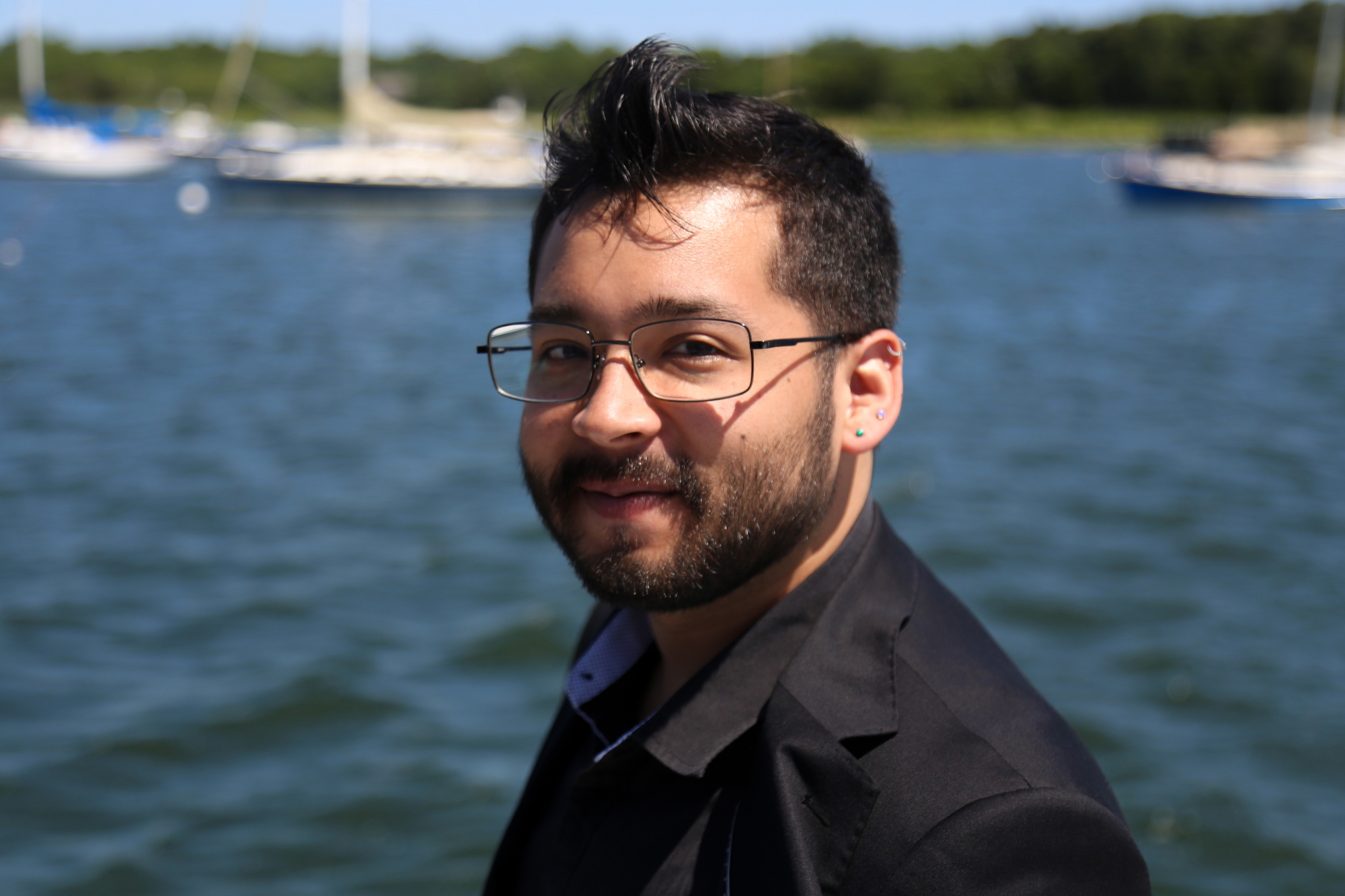
Eduardo Sepúlveda is the Principal Oboist of The Syracuse Orchestra. A native of Antofagasta, Chile, he also served as Principal Oboe for the Des Moines Metro Opera, the Mansfield (Ohio) Symphony Orchestra, Antofagasta Symphony Orchestra, and the National Youth Symphony Orchestra of Chile, touring Europe and South America.
Eduardo Sepúlveda is the Principal Oboist of The Syracuse Orchestra. A native of Antofagasta, Chile, he also served as Principal Oboe for the Des Moines Metro Opera, the Mansfield (Ohio) Symphony Orchestra, Antofagasta Symphony Orchestra, and the National Youth Symphony Orchestra of Chile, touring Europe and South America.
Eduardo Sepúlveda has performed as a guest musician with the Minnesota Orchestra, the Rochester Philharmonic Orchestra, the Columbus Symphony Orchestra, the Richmond Symphony Orchestra, the Cabrillo Festival Orchestra, the National Symphony Orchestra of Chile, the Santiago Philharmonic, and the Chamber Orchestra of Chile. As a soloist, he has performed the Bach Concerto for Oboe and Violin and Haydn Sinfonia Concertante with Symphoria, the Mozart Oboe Concerto and Lebrun Oboe Concerto N.2 with the Antofagasta Symphony Orchestra, Oliver Knussen’s Cantata with the Oberlin Contemporary Ensemble, and Alessandro Marcello’s Oboe Concerto with the Oberlin String Orchestra. Eduardo is looking forward to performing the Strauss Oboe Concerto with The Syracuse Orchestra in January 2025.
During the summer, Eduardo travels back to his hometown where he gives masterclasses at public schools and solo recitals throughout the city. He also performs yearly concerts with his mother’s cello studio and participates in various musical activities at his high school.
Eduardo began his studies at Liceo Experimental Artístico of Antofagasta and continued his education in Santiago, Chile, at Universidad Mayor with American oboist Lillian Copeland. He earned a Bachelor’s degree in oboe performance with a minor in historical performance from the Oberlin Conservatory of Music, under the tutelage of Robert Walters and Kathryn Montoya. Subsequently, he pursued a Professional Studies Diploma at the Cleveland Institute of Music, where he was a student of Frank Rosenwein. Eduardo recently obtained a Master’s degree at The Juilliard School with Nathan Hughes.
In his free time, Eduardo enjoys biking, spending time with his cats, watching sports, playing card games and making music with friends.
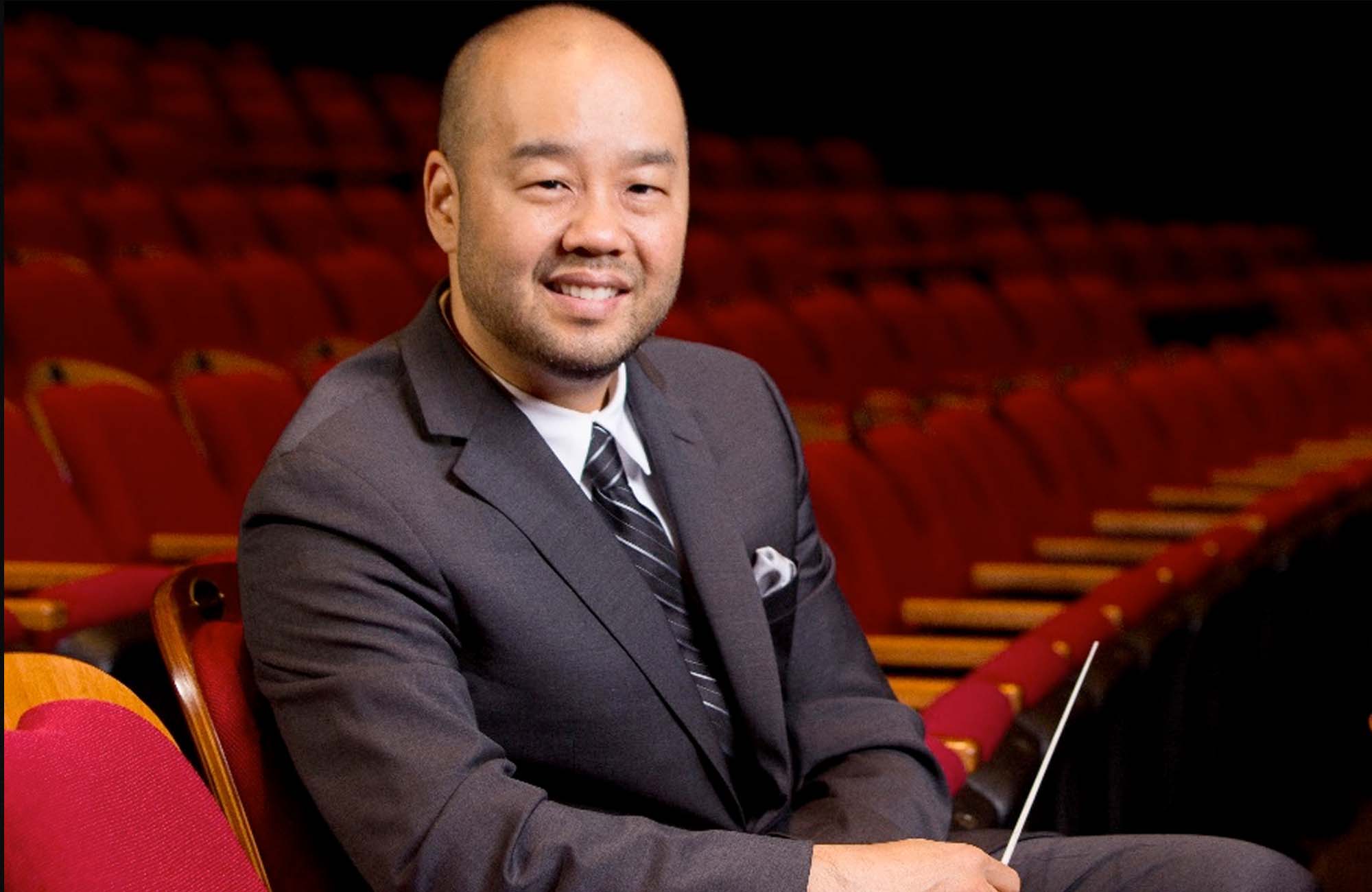
Described as bringing an “artisan storyteller’s sensitivity… shaping passages with clarity and power via beautifully sculpted dynamics… revealing orchestral character not seen or heard before” (Arts Knoxville) Lawrence Loh enjoys a dynamic career as a conductor of orchestras all over the world.
After an extensive two ...
Described as bringing an “artisan storyteller’s sensitivity… shaping passages with clarity and power via beautifully sculpted dynamics… revealing orchestral character not seen or heard before” (Arts Knoxville) Lawrence Loh enjoys a dynamic career as a conductor of orchestras all over the world.
After an extensive two year search, Lawrence Loh was recently named Music Director of the Waco Symphony Orchestra beginning in the Spring of 2024. Since 2015, he has served as Music Director of The Syracuse Orchestra (formerly called Symphoria), the successor to the Syracuse Symphony Orchestra. “The connection between the organization and its audience is one of the qualities that’s come to define Syracuse’s symphony as it wraps up its 10th season, a milestone that might have seemed impossible at the beginning,” (Syracuse.com) The Syracuse Orchestra and Lawrence Loh show that it is possible to create a “new, more sustainable artistic institution from the ground up.”
Appointed Assistant Conductor of the Pittsburgh Symphony in 2005, Mr Loh was quickly promoted to Associate and Resident Conductor within the first three years of working with the PSO. Always a favorite among Pittsburgh audiences, Loh returns frequently to his adopted city to conduct the PSO in a variety of concerts. Mr. Loh previously served as Music Director of the West Virginia Symphony Orchestra, Music Director of the Northeastern Pennsylvania Philharmonic, Artistic Director and Principal Conductor of the Syracuse Opera, Music Director of the Pittsburgh Youth Symphony Orchestra, Associate Conductor of the Dallas Symphony Orchestra, Associate Conductor of the Colorado Symphony Orchestra and Music Director of the Denver Young Artists Orchestra.
Mr. Loh’s recent guest conducting engagements include the San Francisco Symphony, Dallas Symphony, North Carolina Symphony, Baltimore Symphony, Sarasota Orchestra, Florida Orchestra, Pensacola Symphony, Atlanta Symphony, National Symphony, Detroit Symphony, San Diego Symphony, Seattle Symphony, National Symphony (D.C.), Utah Symphony, Rochester Philharmonic, Indianapolis Symphony, Calgary Philharmonic, Buffalo Philharmonic, Albany Symphony and the Cathedral Choral Society at the Washington National Cathedral. His summer appearances include the festivals of Grant Park, Boston University Tanglewood Institute, Tanglewood with the Boston Pops, Chautauqua, Sun Valley, Shippensburg, Bravo Vail Valley, the Kinhaven Music School and the Performing Arts Institute (PA).
As a self-described “Star Wars geek” and film music enthusiast, Loh has conducted numerous sold-out John Williams and film music tribute concerts. Part of his appeal is his ability to serve as both host and conductor. “It is his enthusiasm for Williams’ music and the films for which it was written that is Loh’s great strength in this program. A fan’s enthusiasm drives his performances in broad strokes and details and fills his speaking to the audience with irresistible appeal. He used no cue cards. One felt he could speak at filibuster length on Williams’ music.” (Pittsburgh Tribune)
Mr Loh has assisted John Williams on multiple occasions and has worked with a wide range of pops artists from Chris Botti and Ann Hampton Callaway to Jason Alexander and Idina Menzel. As one of the most requested conductors for conducting Films in Concert, Loh has led Black Panther, Star Wars (Episodes 4-6), Jaws, Nightmare Before Christmas, Jurassic Park, Casablanca, The Wizard of Oz and Singin’ in the Rain, among other film productions.
Lawrence Loh received his Artist Diploma in Orchestral Conducting from Yale, his Masters in Choral Conducting from Indiana University and his Bachelor of Arts from the University of Rochester. Lawrence Loh was born in southern California of Korean parentage and raised in Carlisle, Pennsylvania. He and his wife Jennifer have a son, Charlie, and a daughter, Hilary. Follow him on instagram @conductorlarryloh or Facebook at @lawrencelohconductor or visit his website, www.lawrenceloh.com



